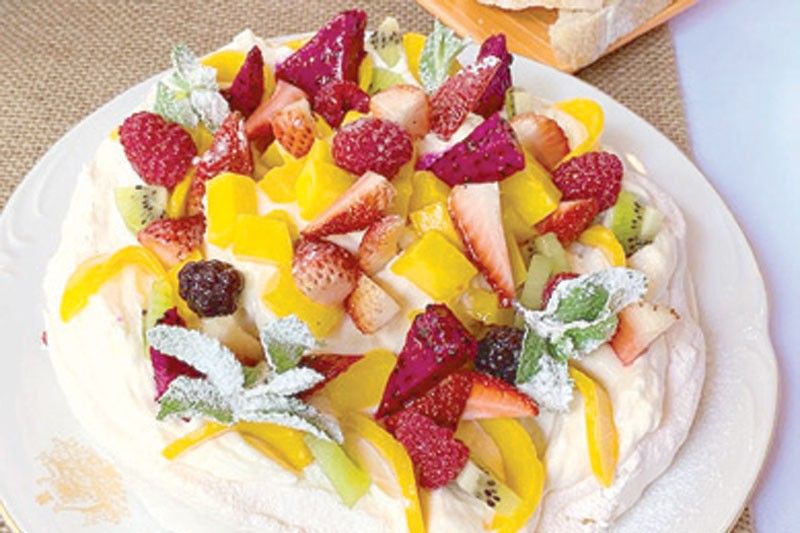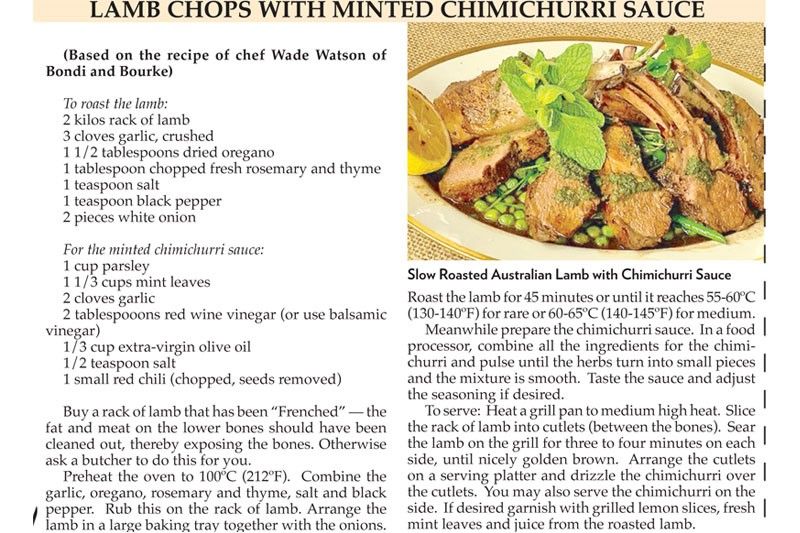Food, family and togetherness down under

One of my favorite things to do whenever I’m in Australia is to go to the supermarket. There I get mesmerized by the sheer abundance of goods, their packaging, their promise of deliciousness and the visions they conjure of hearty meals laid out on the dinner table.
Back in Manila I often find myself searching for these goods — and I silently rejoice when I find some cuts of beef here, some tubs of yogurt there, some butter, cheeses, biscuits, fruit juices, cereal, chips and chocolates, all made in Australia, which may as well be the proverbial land of milk and honey.
It was such a pleasant surprise therefore to find all these and more in the house of Australian Ambassador Steven J. Robinson one sunny Monday afternoon. The ambassador was hosting an event to introduce to the press some of the best Australian products that are now available in the Philippines. And indeed, some of these goods were there on a table, proudly on display. For a minute I thought I had been transported to Coles or Woolworths, two supermarkets I frequent in Sydney.

Like Filipinos, Australians also indulge in food, family and togetherness, Ambassador Robinson said. Australia makes such indulgence possible the wholesome way. Its beef and lamb come from animals raised on green, airy pastures, free from artificial growth hormones, according to Makund Narayanamuti, Austrade’s ASEAN general manager. In fact, said Robinson, Australia is now the top supplier in the Philippines of imported beef and lamb.
Perhaps this should come as no surprise. The Philippines doesn’t have a lamb industry, after all. As for beef, the prices of Australian beef seem to be only slightly higher than those of other beef sources. For its tenderness and good quality, Australian beef does seem to be good value for money.
Consumption of beef and lamb has, in fact, been on the upturn recently. “We are almost hitting pre-pandemic level,” said Paul Perez, Meat and Livestock Australia’s country manager.

To make Australian beef even more appealing, they train local chefs and butchers on methods of cutting the beef according to their usage, said Christopher Lim, minister-counselor of Austrade. Thus there are Australian beef labeled pochero cut, nilaga cut and even thinly sliced sirloin or top round ready to be made into Filipino bistek. Just recently I bought a pack of Australian beef strips labeled “stroganoff.” It was perfect for cooking into beef with ampalaya.
“We are also the top provider of fresh produce like grapes and citrus fruits,” Robinson added.
Likewise, several Australian canned goods have found their way to local supermarkets and groceries. I was delighted to find on the display table Ox and Palm corned beef (my favorite imported corned beef brand). Juicy and chunky, it’s made from high-quality Angus beef and has just the right ratio of fat to meat. Thanks to my friend Milette Orosa’s Galleon Trading International, Ox and Palm is always available at the Royal Duty Free shops in Subic Bay Free Trade Zone (check your favorite supermarkets — it may also be available there).

To give guests a taste of true Australian flavors, a sumptuous lunch was prepared by chef Wade Watson, owner of the restaurant Bondi and Bourke. For the first course we had a refreshing poached Tasmanian salmon salad, tossed with cherry tomatoes, goat cheese, shaved William pear, and baby spinach, all drizzled with a tangy lemon vinaigrette dressing. Because they live in extremely cold waters, Tasmanian salmon develop a lot of fat, which gives them more texture and flavor.
The second course gave us a taste of the exquisite flavor of Australian lamb. Slow roasted then seared to a perfect golden brown, the lamb was showered with a minted chimichurri salsa, a lively concoction of fresh mint leaves, garlic, and parsley pulsed with vinegar and olive oil. With its hint of mint, the chimichurri was the perfect foil to the richness of the lamb.
The other meat course was grass-fed, bone-in prime rib of beef, slow roasted in butter and fresh thyme, served with Cremini mushrooms and blistered vine tomatoes. Like the lamb the beef was succulent and tender, a perfect showpiece of the delectable flavors of Australia’s pristine environment.
I loved the artisanal cheeses, too, but I was truly impressed with the Aussie Pavlova. Named after the acclaimed Russian ballerina Anna Pavlova, it has since been known as an Australian specialty. This elegant dessert has a light meringue base, made fluffier with fresh Bulla double cream and topped with strawberries, kiwi and blackberries.
Here’s chef Wade’s recipe for the slow-roasted lamb. You can find Australian lamb in places like Santis and The Marketplace.



















